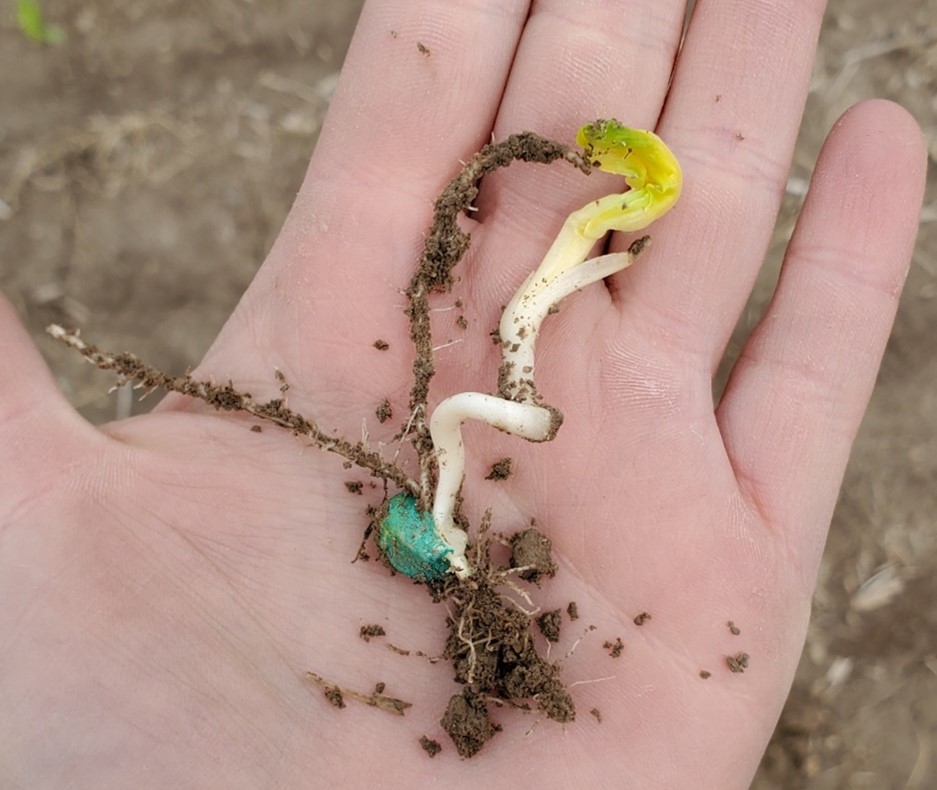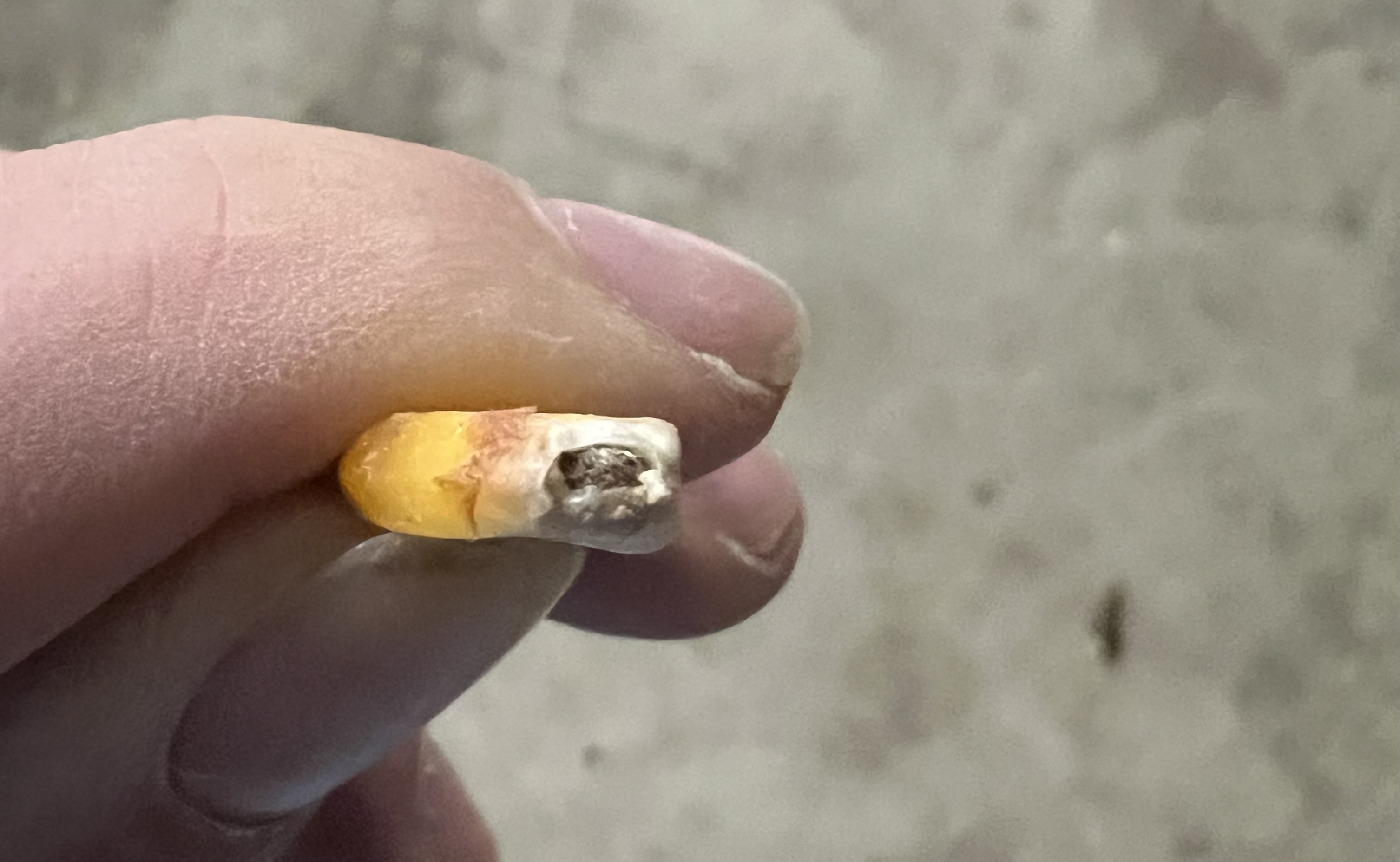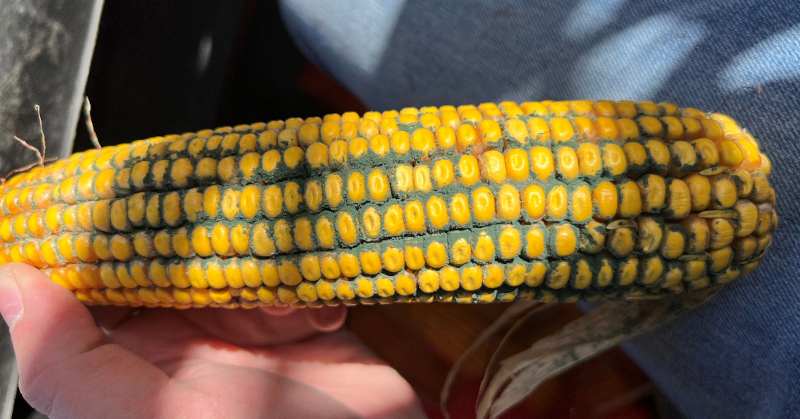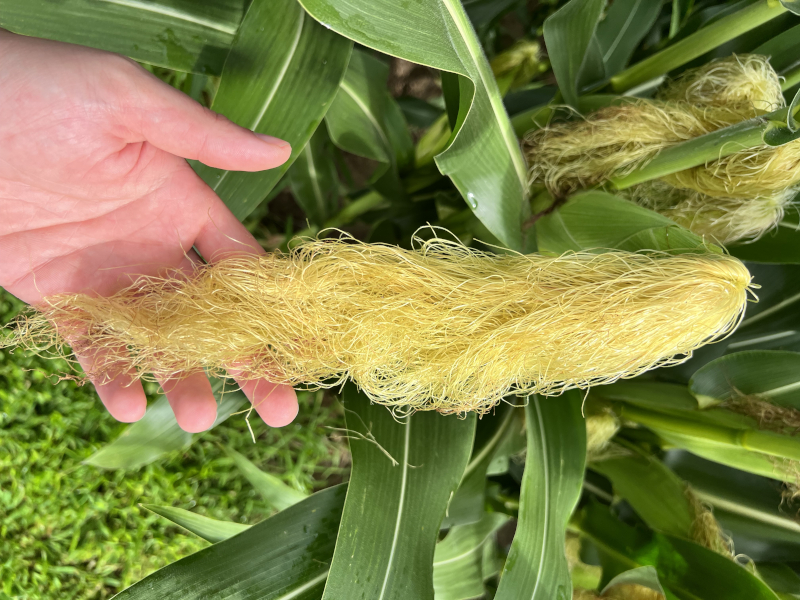Managing and maintaining a high-yielding corn crop following a cereal rye cover crop can often be a challenging task. Cereal rye hosts a large array of benefits as a cover crop which includes reduced soil erosion, improved spring weed control, nitrate leaching reduction, and more. In addition, this cover crop is often the easiest to get established across a wide-range of fall conditions and harvest timings. However, corn can often struggle following this cover crop if not managed properly. For example, in our own research trials which span the state of Indiana and have been ongoing for multiple years, we have observed yield reductions in corn following a fall-drilled rye cover crop range from 10 bushels to 30 bushels per acre (Picture 1). Now this can be quite alarming, but it also presents a challenge that needs to be further understood and addressed.
One of the biggest challenges for corn following cereal rye is nitrogen availability. Cereal rye establishes and grows very well across many conditions, but this also means it produces quite a bit of carbon, and also takes up quite a bit of nitrogen from the soil without releasing it timely, even when terminated multiple weeks before planting. Now this may be good from an environmental standpoint, but it also presents a challenge for the succeeding corn crop which can cause yield reductions.
One of the best ways that we have determined to combat these nitrogen availability challenges and limit yield reductions in corn following cereal rye is using both a starter fertilizer and using/paying attention to your in-season sidedress nitrogen application timing. This fall, we concluded a research trial which spanned 6 different fields across 2 years and worked to examine the role of in-season nitrogen timing following a rye cover crop. This study examined the use of a 2x2 starter fertilizer (40 lbs N/acre) application combined with either growth stage V5, V10, or V5+10 sidedress nitrogen applications within replicated field-scale plots with and without a fall drill-seeded rye cover crop terminated 2-3 weeks before planting. In all of these treatments the total nitrogen rate was kept the same. Following the conclusion of this research trial we observed that using a 2x2 starter fertilizer + a V5 sidedress application out-yielded a V10 or V5+V10 sidedress application when following a rye cover crop at every single location and across multiple years. In addition, this application method eliminated the yield-lag in corn following cereal rye at over half of our research site-years. In contrast, when a cover crop was not included, we often observed either no yield differences between in-season nitrogen timings or slight yield increases from a V5+V10 nitrogen timing. Overall, our data suggests delaying your in-season nitrogen application when not following a rye cover crop may not cause a yield reduction or may even increase yield, but when following a rye cover crop, a delayed in-season nitrogen application (e.g., V10) always resulted in a reduction in yield.
This research has helped provide additional information and is another step toward limiting corn challenges following a rye cover crop. The use of a split application of nitrogen which includes a 2x2 starter and a coulter injected sidedress application at V4 – V6 is often one of the most efficient and highest yielding application methods in many of our research trials throughout Indiana. This method allows for adequate nitrogen supply to meet early-season corn needs while also limiting nitrogen losses by timing the bulk of the application rate closer to when the plant requires it. Based on our research, this is even more important when following cereal rye in order to combat lower early-season nitrogen availability and to prevent additional nitrogen immobilization. Overall, paying attention to nitrogen placement and timing is always critical to improve use efficiency and yield in corn, but it is even more important when following a rye cover crop.
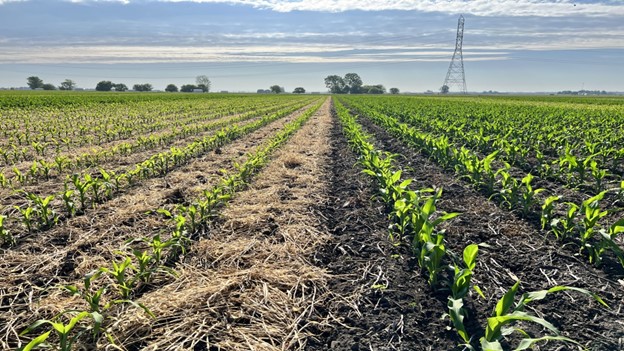
Picture 1. Early-season visual differences in corn following a cereal rye cover crop (left) as compared to corn not following a cereal rye cover crop (right). West Lafayette, IN 2023.
